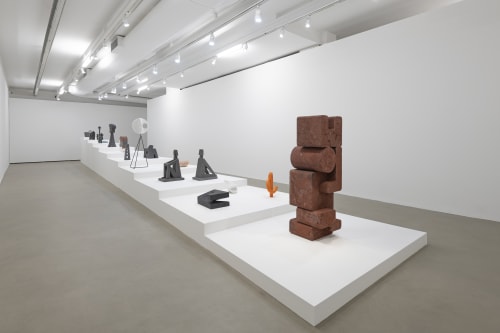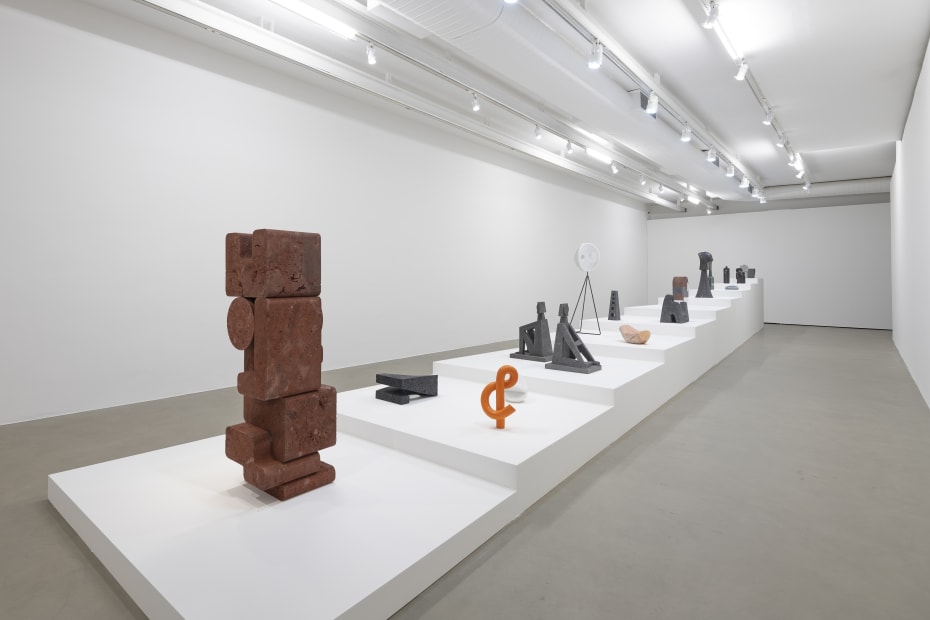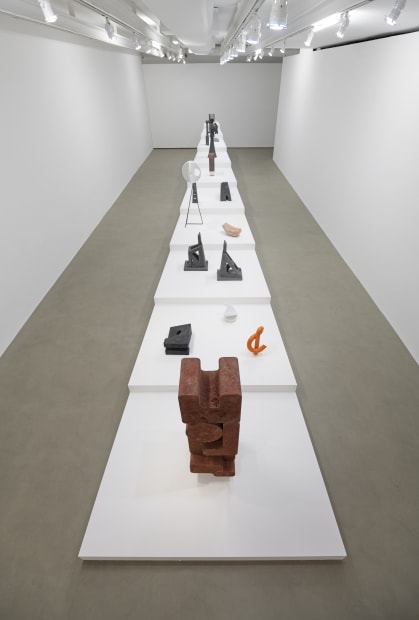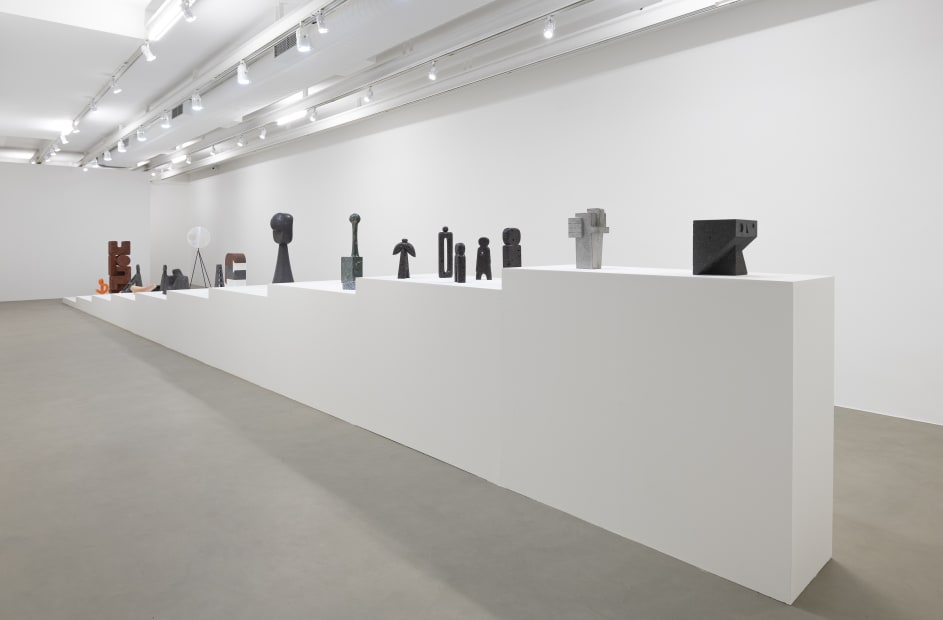Sem título: Pedro Reyes
An intensive year of work at the studio becomes evident in the intimacy of Pedro Reyes´ new sculptures. Appealing to the mineral richness that connects Mexico to Brazil; Reyes employs direct carving in stone, a practice that has existed for over thirty-five centuries in the continent. Reyes extends his social practice aiming to reinvigorate local craftsmanship through a Mesoamerican visual vocabulary that predates the dominating colonial canon of Art History, imagining its concrete presence on this day and age
Luisa Strina Gallery is pleased to announce the third exhibition by Pedro Reyes. The new sculpture show will open on April 20th and will remain on view until June 12th, 2021. Over the course of his career, Pedro Reyes has developed a narrative that includes sculptures, social practice, public art, theatre and drawing. On this exhibit Reyes presents a repertoire of sculptures that merge pointed allusions to Mexican culture creating his own visual language.
Reyes’ exploration in the sculptural process continues to challenge materials and conceptual canons of the mediums he works with. Sculptures with porous surfaces finished with chisels are accompanied of clean cut, carved pieces that evoke logical movement and dynamism. By employing a reflective naming system, the titles allow a better comprehension of the work. Highlights from the exhibit include Ponto e vírgula (2021), a semicolon carved from a single block of white marble, that traverses a topological jump from second to third dimension. The intersection between the dot and comma is a semantic conjuncture. The dot is a stop while a comma symbolizes a pause.
Construcción (2021), comprises red Tezontle; a rock taken from the volcanic mines in Texcoco (east of Mexico City). The artist uses the material as a tool to comment on ancient cosmogony where lava represented the blood of the planet. Combining these two facts, Reyes reinterprets its meaning. On Sentinela (2021), Reyes addresses the seated figure. The title translates to guardian, a silent yet attentive character. A number of lines form two variations of the figure, simplifying the silhouette. By creating both heads with a circle in a square, they attain gender neutrality. Diego Rivera´s museum Anahuacali (house in the valley of Anahuac) and his collection of Pre-Columbian artefacts was a significant reference for this set of volcanic stone sculptures.
The anthropomorphic figures inspired by the Mezcala findings (a civilization that predates the Olmec) convey certain sensations and feelings by breaking symmetry. Reyes emphasizes on how abstraction and the aim to simplify figures was studied centuries before Modernity. The pieces are carved out of purple tezontle which is one of the hardest stones. The holes in them add an unworldly texture.
Signal (2021) is carved in Jadeit a type of green stone found in Mesoamerica. Through this sculpture, which is a box with an abstract representation of the screen, Reyes combines ancient techniques with contemporary references. As a species we have an obsession with control and communication. Therefore, Signal is an abstraction of the idea, the icon.
Abolition (2021) is made in a technique that Reyes recently started using which is a mix of metal and concrete. It is the representation of two hands holding each other like a tower combining vertical and horizontal lines. The process starts by welding pieces of metal wires that create a frame, striving to achieve a constructivist approach. Two hands together are a symbol of cooperation because there are endless things one cannot do alone, but also, the hand has many different meanings depending on its posture. These can be interpreted as concordance which derives from heart in Latin. Reyes also reflects on the importance of being an abolitionist today because we have seen a rise of racism. “It is not enough to be neutral. We must be explicitly an abolitionist, which means to actively denounce white supremacy and to acknowledge the work that has to be done to achieve real equity and justice. Hence, these two hands are a symbol of abolitionism that is part of the unfinished decolonization process”, explains the artist.
Pre-Hispanic cultures have an essential role in Pedro Reye´s work. In this exhibit Reyes achieves to integrate contemporary aesthetics with ancient traditions rooted in Mexican culture. Posing open-ended ontological questions Reyes leads to introspection.






